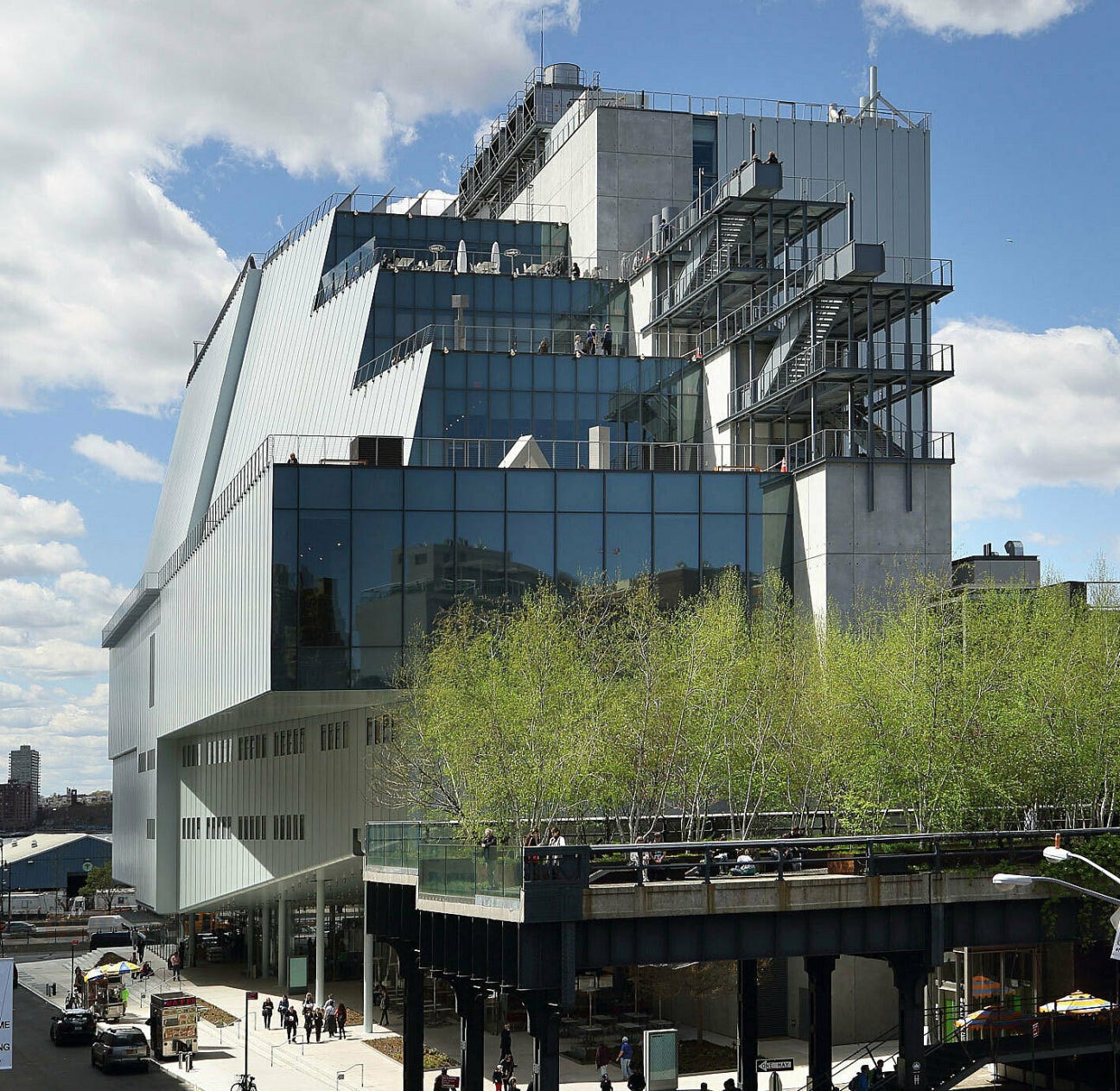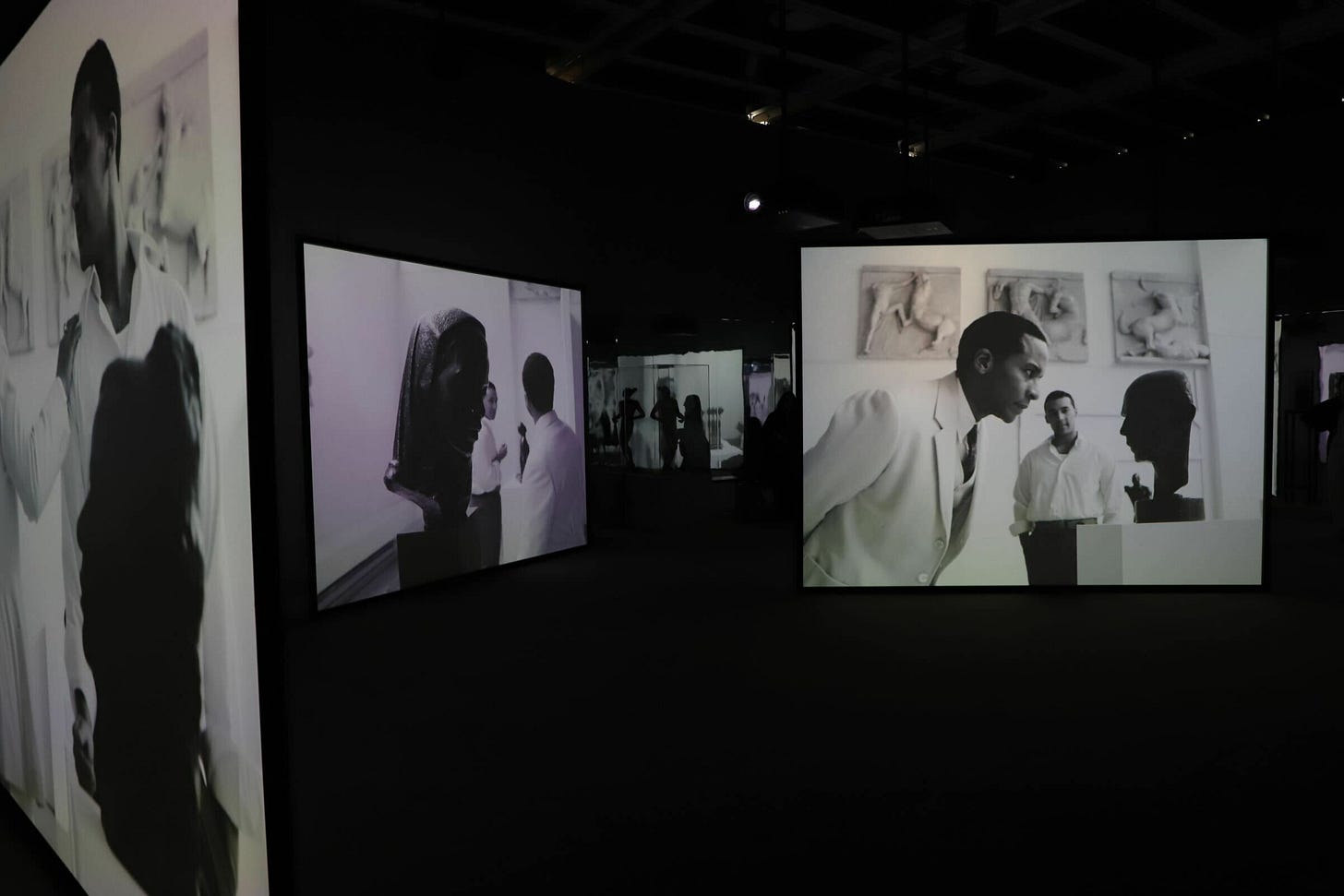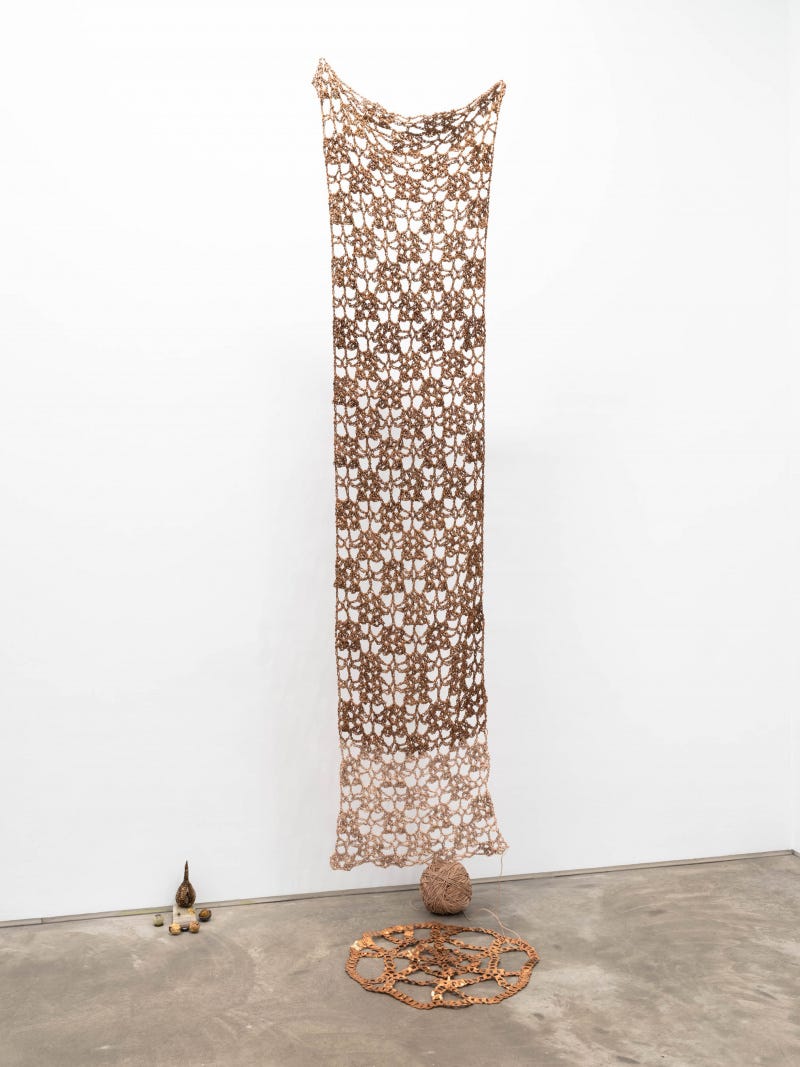The Whitney Biennial's "Even Better Than the Real Thing" is Better Than You Think
The 81st edition of the exhibition tackles a lot and left me with many thoughts.
This week the 81st iteration of the Whitney Biennial opened on March 20th. What is often viewed as a barometer of contemporary art in America, this year's edition has set the pace for upcoming fairs and exhibitions to come. Titled Even Better Than the Real Thing (which to me on first pass also thought it cleverly was referring to the 1991 U2 song with the same title among other things) features 71 artists in total, a much more manageable subsection of artists than previous ones.
This year’s lay of the land
One of the major themes explored in this year's biennial also has taken a cue from culture at large and digs into the notion of “the real” which has taken on new meaning today. In an era of deep fakes, augmented reality, virtual reality, AI and more, many anxieties around the digital realm and what can be perceived as real and potentially fake are certainly looming large. And this biennial, like ones before is mirroring back these issues in interesting and complex through the artists that are taken it on.
Image courtesy of the Whitney Museum
There weren't a lot of missteps for this biennial for me, and the curation for 2024 was flawless in many ways within the execution and we have Chrissie Iles and Meg Onli, with Min Sun Jeon and Beatriz Cifuentes to thank for that.Both the third and fourth floors had very seamless transitions among the various artists, it was easy to navigate and maintained a level of elegance that more recent exhibits lacked. The 2022 edition (which was postponed due the pandemic) while I am a huge fan of Adrienne Edwards on the whole, felt that the fourth floor emanated a larger chaos in terms of the sheer amount of art and artists featured which was done in a salon style format.
Portrait of Meg Onli (left) and Chrissie Iles (right). Photography by Bryan Derballa. Image courtesy of the Whitney Museum.
However, a lot of this was symptomatic of having come out of a global pandemic that completely uprooted and changed the way people lived and many aspects of their lives on nearly every level; including seeing art. The virtual in the deep pandemic translated to online viewing rooms, which to this day still invokes a Pavlovian sense of fear. While we are mostly past that it seems, this year's biennial is instant on wanting to push the viewer to look towards the now and the future and perhaps the possibility of what the real is, and can be, virtually and otherwise.
One of my gripes with the curation is while there is a large presence of indigenous artists which is important, and much overdue, they all seemingly were placed together. Thematically this may have been part of a larger cultural vision, to me it read a bit as tokenism, and thought placing these artists throughout the show would have been more effective.
The Whitney’s political controversies over the years
Historically, there have been issues with the biennale which have outwardly employed aspects of gatekeeping with gender and racist barriers. This resulted in various artists not being included and sparked criticism and protests such as the Guerilla Girls mourning one in 1987 citing these very issues. The Biennials and museum’s approach to politics and how it is portrayed has never hit the mark and often has resulted in controversy (Dana Schutz in 2017 a painting of Emmett Till’s casket, Warren Kanders being on the board of the museum and owning part of Safari Land which produces tear gas and was used in multiple border disputes across the globe, the 2020 controversy with the Black project) It is situated within a complex landscape, and as art writer Julia Halperin explores in a recent piece for Cultured Magazine, the question that the art world has and why we love to hate hate the biennial?
Film and performance’s presence this year
Another through line throughout the show that I was struck by, and which also loomed large in 2022, were body-based works and also the prominent feature of film. When viewing installation, film, and performance work, one thing that galleries and museums tend to struggle with is the general curation of how to feature this kind of work, the build out in the space, and also the general nosebleed that happens and how it affects other work. This year for me knocked it out of the park in that regard. With that in mind, here are my four standout pieces from the 2024 Whitney Biennial.
Issac Julien, Once Again…(Statues Never Die), 2024
Issac Julien’s inclusion was one of the best things about this year’s biennial. The British artist’s work is featured prominently in a 5-channel video installation entitled Once Again…(Statues Never Die). In it, Julien explores the life and work of Alian Locke, a prominent thinker and philosopher of the Harlem Renaissance. Acting as a king of historical intervention, it functions to me as kind of conversation and call to action with prominent black artists of Locke’s era and within the African diaspora, as well as thinking about larger issues of inclusion, representation, and the way in which black artists’ work have been collected historically, and more recently and what this means. The idea of ‘real’ and history resonates here and because Julien uses an actor to depict Locke, while it's not a deep fake, it brings up questions about what reality is and how it functions when we look at history and recall specific individuals.
Image courtesy of Anni Irish.
The work for me is visually stunning, and running at around 31 minutes is an experience in and of itself. It calls into question many things about the Harlem Renaissance, black art in general, power, and legacy. Through the use of sculptures by Richmond and Matthew Angelo Harrison, this also opens up an interesting conversation crossing historical time periods, genres, and more and also calls into question the object itself and the archive. For me, it echoes a reparative mode of history through the use of objects that might not usually be found in an archive and how to rethink that and is inline with the work of prominent black scholars such as Saidiya Hartman and Fred Moten.
Holland Andrews, Air I Breathe Radio, 2024 and Hyperacusis Version 1: Sleeping Bag, 2024
Andrews’s installations within this year’s biennial were a bright spot and also really use space and sound in ingenious ways. Utilizing the main stairwell within the museum with various speakers hung at different heights from the top, Andrews has managed to create a cacophony of sounds and activate this space in a way that it hasn’t before. What I love about this work is the ingenuity and also how she has inserted herself into the space. Even with the stairwell doors closed, the sound carries and there is a kind of forced integration that comes from that but also an engagement that can take place. There is potential in this possibility and that is what I love about performance based works, what can be, and what could happen. However, this can be said of all art, but the possibility to me is more loaded with performance based works.
Image courtesy of a screenshot from the artist’s Instagram
Andrews works at the intersection of sound and performance work, and there is a strong lineage between the two. Both works run about an hour in total and feature Andrew’s voice with other modified sounds and manipulations. The other installation is featured in the freight elevator of the museum. The works also, to me, have a direct connection to the Fluxus movement and through the installation and use of sound, these two pieces create the kind of event aspect this work has come to be known for. The notion of the real is here for me in the sound and in the experience it creates.
Harmony Hammond Patched, 2022, Black Cross II, 2020–21, Chenille #11, 2020–21, Double Bandaged Quilt #3 (Vertical), 2020
Harmony Hammond’s work has spanned the last five decades, and she is flawless always. Working in a larger historical framework that employs that language of feminist critique, craft, quilting, and fine art, Hammond’s work defies genres while also forcing the viewer to engage with material and the process. The handmade, the stitches, and choices of materials she pulls together into the compositions she creates is where it all comes together.
Harmony Hammond, Black Cross #1, 2019–2020, Oil and mixed media on canvas. Image courtesy of Alexander Gray Associates.
Larger ideas connected to the history of the domestic sphere and labor also resonate and there are four works featured by Hammond in this year’s biennial ranging from 2020-2022. Within Patched, Hammond uses a bloodstained quilt that she repurposed and rearranged to create a work that serves as a commentary on the overturning of Roe v. Wade and also calling attention to a larger history of violence inflicted on women’s bodies. Through the use of the grid too which is punctuated with grommet holes, Hammond adds another layer to the work and her commentary that looms large within the current moment.
ektor garcia
ektor garcia’s work confronts issues of migration head on in their work. As someone who experienced the crossing the U.S./Mexico border often as a child, this has come to be a focal point in his artistic practice today. Using materials such as copper wire, horse hair, and waxed threads, garcia transforms them into delicate, beautiful objects that defy what they are and have an implicit underpinning of labor within them. Delicate and lace-like, the works help to offer a commentary on something that millions of people are affected by on a daily basis
ektor garcia’s encuero, 2022-2023 Crochet leather and copper. Image courtesy of James Fuentes.
garcia’s own narrative are wound up in these objects some of which have been suspended to the ceiling and others that are placed on the wall. Using weave, crouching, and what sometimes look like knitting techniques, he blends the line between fine art and craft while also thinking about place and specifity. Quietly gorgeous and casting shadows on the wall as well, the installations create an almost meditative quality. garcia’s own narrative is a part of these works, and in many ways the lived queer experience becomes even more vital here given who he is and what he does. By supervening a colonial framework, and deconstructing a social and political practice that has resulted in oppressive systems for centuries, through these works garcia is looking to craft a new history while also looking back into his.
I am still on the verge too since my coverage was here and not in an outlet, but there will always be more to come.









